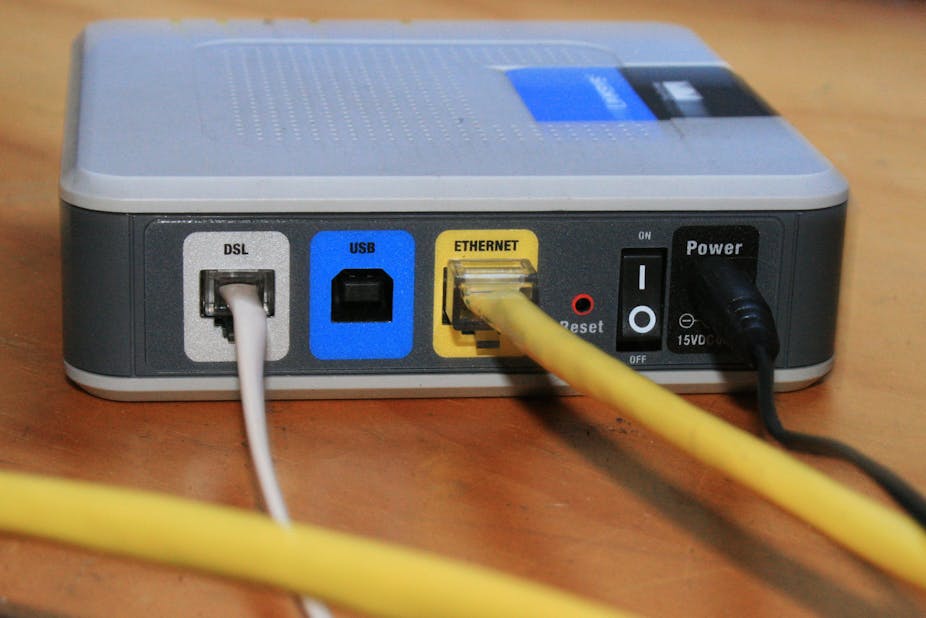If you’re the sort of person who relies on the internet every day, you’ll maybe have twitched slightly on hearing rumours that the world is running out of internet addresses.
Is this true? Well, yes and no.
We’re running out of addresses for the current version of the Internet Protocol (IPv4) – the language your computer uses to speak to other computers – and this has led some pundits to predict the next version (IPv6) is about to take off.
Such predictions come on the back of the recent assignment by the top level internet address registry, the Internet Assigned Number Authority (IANA), of its final batch of unallocated IPv4 addresses.
But, given this is the most recent of a long line of predictions of the imminent universal take-up of IPv6, will it prove to be true this time?
What’s the backgound?
Every machine connected to the internet has its own IP address. Whenever you send an email or request a web page in your browser, the information you send out contains the IP address of the destination machine. Information coming back to you contains your IP address.
In the original design of the internet, it was intended that each assigned IP address be globally unique.
Another original design decision was to encode an IP address as a 32 bit number which imposed a theoretical upper limit to the number of unique IP addresses at about 4 billion.
(It’s worth remembering that this decision was made – circa 1980 – when machines connected to the internet were numbered in the hundreds.)
No-one could have foreseen the confluence of a number of technology developments – local networks, PCs, graphical user interfaces, and the worldwide web – that led to exponential growth in the size of the internet, starting in the early 1990s.
We are currently facing the next wave of growth in the form of web-enabled mobile phones. Recently it was estimated that there are more than 5 billion devices connected to the internet. How do we get 5 billion devices connected with an address space of 4 billion? All will be revealed below.
The problem of exhaustion of 32-bit IPv4 addresses was foreseen by the Internet Engineering Task Force (IETF), the body that oversees internet standards development. By 1998 the IETF had finalised and published the design of IPv6.
A key feature of IPv6 is that an address is encoded in 128 bits, providing about 3.4x1038 unique addresses, and generating some mind-boggling analogies: one estimate is that IPv6 can provide a unique address for every grain of sand on the planet.
Since 1998, every major equipment vendor has developed and made available IPv6 compliant products such as servers, routers and PCs. Governments and industry bodies have been encouraging and supporting the deployment of IPv6.
So why has the actual deployment of IPv6 been so miniscule?
A widely-cast net
The internet is an interconnection of a vast number of sub-networks, owned and managed by autonomous organisations, in the form of ISP (Internet Service Provider) and enterprise networks.
To migrate fully to IPv6, while maintaining the universal connectivity that is a hallmark of the internet, each of these organisations would need to invest in and deploy IPv6 technology. This comes at a financial cost.
The fact that IPv6 provides no perceptible service improvements means there has been little or no incentive to date for those who would bear the costs.
At the same time, a number of technology developments have ameliorated the effects of dwindling numbers of IPv4 addresses. Of these, the introduction of Network Address Translation (NAT) is one of the most significant.
This technology was initially intended as an interim solution until IPv6 was deployed, but has instead become a solution of choice.
The key idea is that devices within “edge networks” of the internet – home or network offices, for example – do not have globally unique IP addresses, but instead have private addresses.
These private addresses are monitored by a “NAT box” which sits at the boundary between the edge network and the external internet – your router, for example.
By using clever mapping techniques, the NAT can effectively support a large number of internal private IP addresses while only using a much smaller number of public addresses. This is how the current internet supports 5 billion devices.
It is due to economic and technological reasons such as these that the oft-predicted demise of IPv4 has not yet come about.
And this time around?
I would hazard that circumstances are now a little different.
With the exhaustion of IPv4 addresses, the IANA will now focus solely on distributing IPv6 addresses. For organisations that genuinely need new IP address blocks this is likely to prompt a move toward the adoption of IPv6.
We might also see the creation of a market for unused IPv4 addresses, as an incentive for organisations holding a large number of unused addresses (universities are a key culprit) to trade them back.
Fortunately, technology solutions are also available, which have been successfully used in those small parts of the internet that have transited to IPv6 – mandated public sector organisations, for example.
In organisations such as these, IPv6 addresses are assigned to devices on the edge of these networks which then interconnect with the rest of the internet via NAT-like boxes.
In the next few years I suspect we’ll see increased deployment in enterprise and ISP networks in this way.
And the effects for me, the user?
In all likelihood, very little will change.
Every computer on the market these days is already IPv6 compatible, and switching to the new protocol is largely painless. If and when the change comes, you will probably not notice it.
Getting ISPs and other web giants to make the change is the first order of business.

